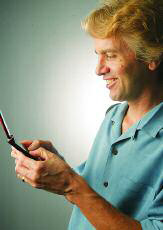
There was a time in the not-toodistant past when educators viewed pencils with erasers as crutches for lazy students. In the following years, other advancements like calculators and spellcheck raised similar concerns. Now a new trend has found its way from the Web into the classroom. Call it “webspeak”or “slanguage” … English purists call it a big problem.
But Kevin Leander, associate professor of language and literacy at Peabody College, isn’t so sure.”Often what happens in education is that there’s a huge overreaction to any kind of technology. But literacy and technology have always been tied together in one way or another, ever since papyrus and scrolls.”
In slanguage, the writer uses abbreviations and shortcuts as a matter of course. It is especially rampant in text messaging, where space is limited.”See you later”becomes “CUL8R.”And “NALOPKT,”Leander’s favorite, is “not a lot of people know that.”
Certainly, slanguage is not absolutely correct– but is it wrong? “Surface level correctness is often the feature people focus on when they think about literacy,” says Leander. “So they become more concerned that someone can spell correctly rather than the fact that the person actually has ideas to communicate.”
Leander believes some of the expressions will end up in the dictionary one day.
“One study talked about how children who send lots of text messages demonstrate increased levels of phonetic awareness and linguistic creativity. From that, one could say that texting on mobile phones makes writers better because they are experimenting with language.”